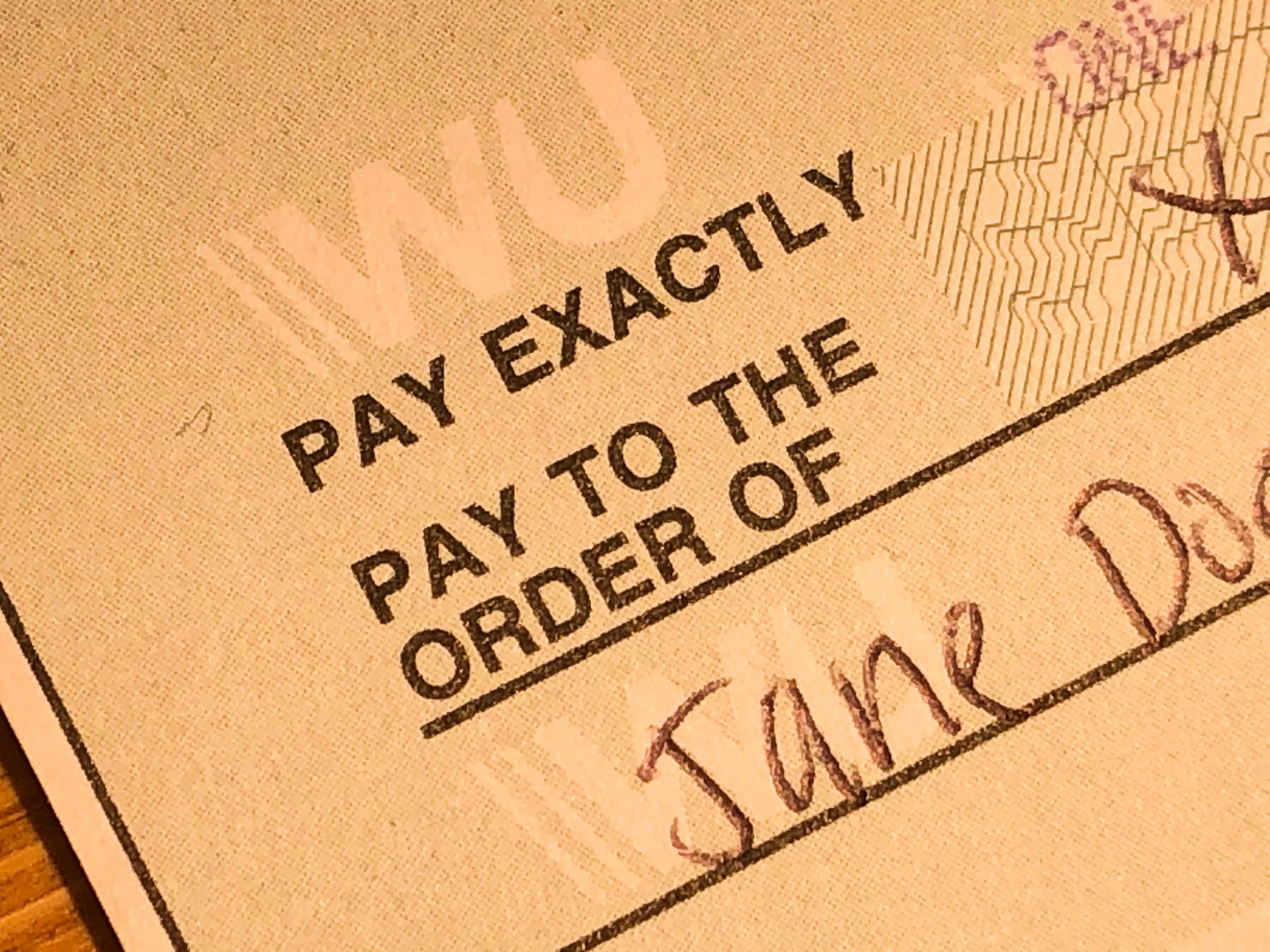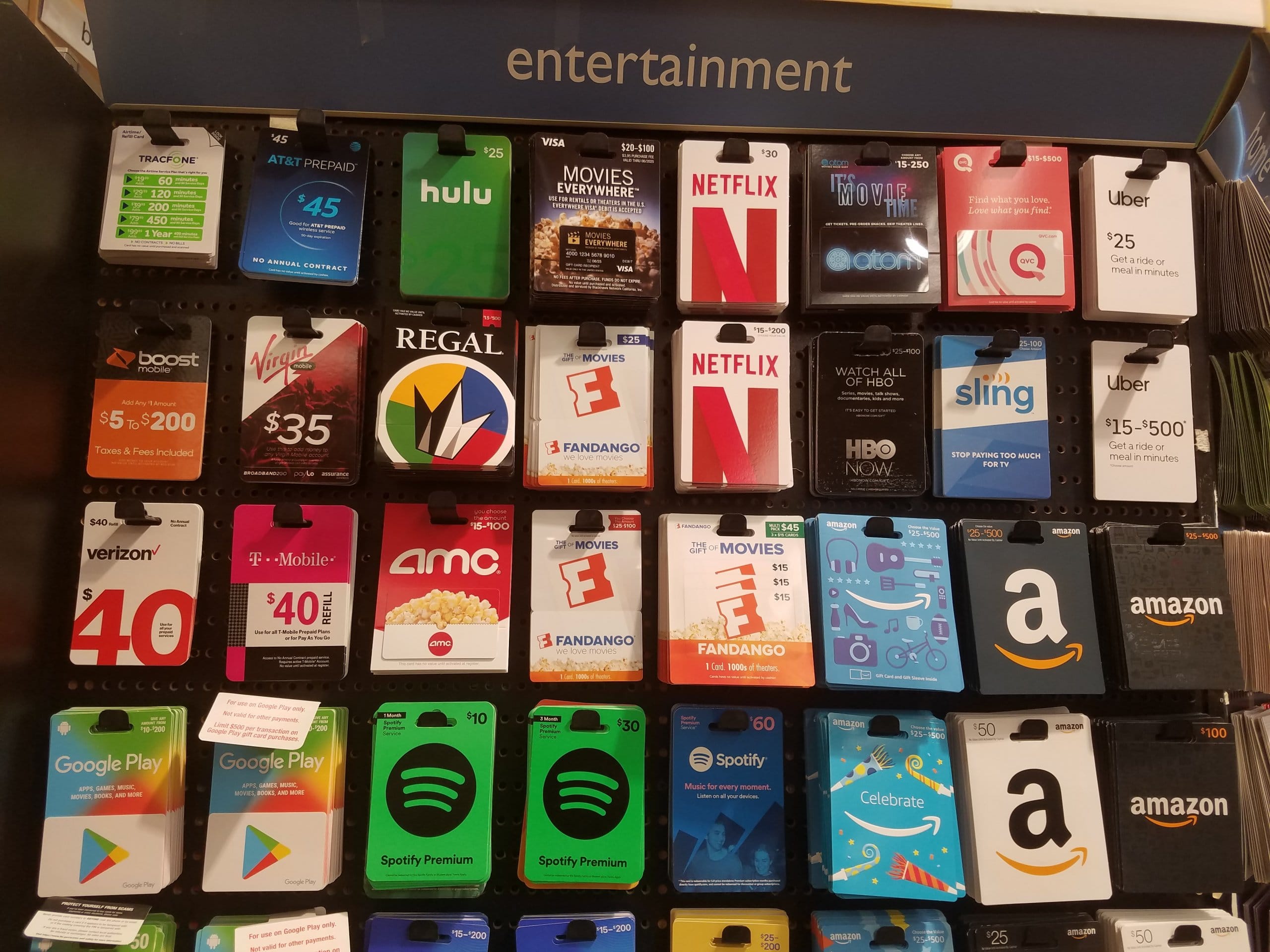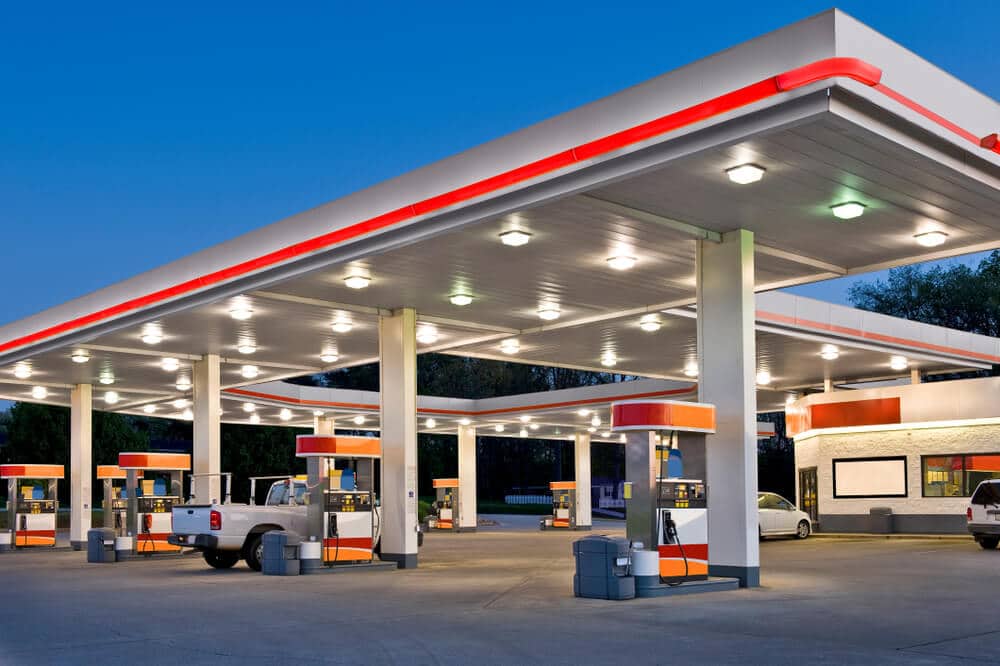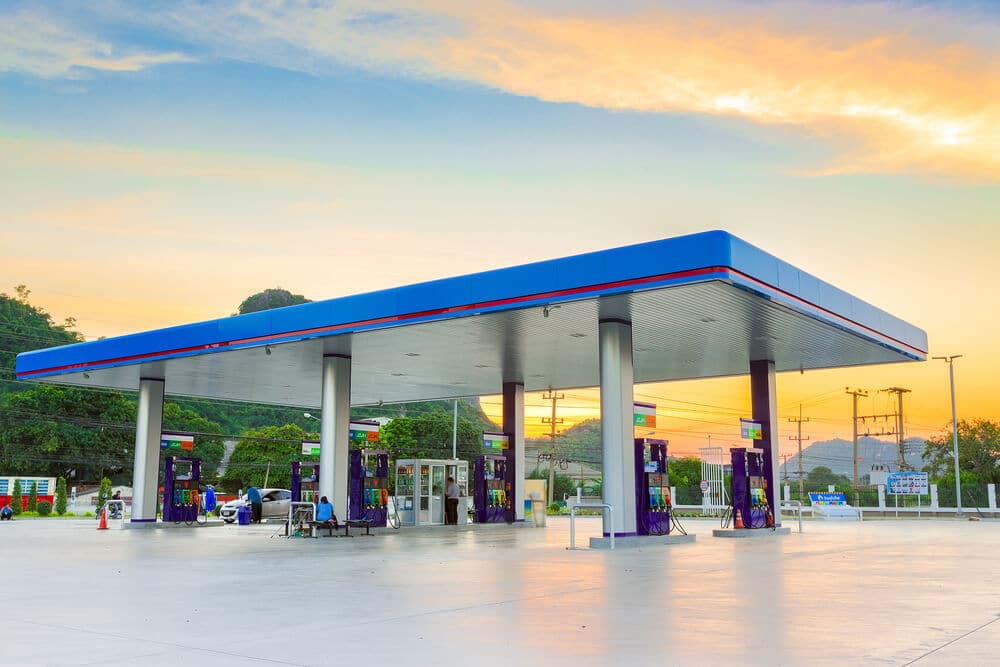Money orders are a form of payment similar to a check. However, they’re prepaid at the time of purchase and printed with a specific monetary amount, so they cannot bounce.
Money orders also include both the purchaser’s information and the recipient’s information, but do not include personal information that would be easy for a thief to compromise, such as your bank account number.
The features noted above make money orders a safe alternative to using personal checks or cash — particularly when sending payments by mail.
There are three major issuers of money orders in the U.S.:
- MoneyGram
- Western Union
- The U.S. Postal Service (USPS)
Uses for Money Orders
The best use for money orders is to pay bills if you do not have a checking account, or to use as an alternative to sending cash through the mail.
You can use money orders for several purposes, including the following, as long as the company you’re paying accepts money orders:
- Auto loan or lease payments
- Credit card payments
- Insurance premiums
- Mortgage payments
- Online/mail-in merchandise orders
- Rent
- Security deposits
- Utility bills
You can also send money orders to family or friends when you would otherwise send cash, such as with a birthday card.
Are Money Orders Safe?
Money orders are generally safe to use. They include physical security measures, such as watermarks, which make them easy to verify.
They are also traceable; if you have the money order’s serial number, you can check with the issuer to find out whether the recipient has cashed it.
Note that it is best to fill out the money order immediately after you purchase it, so someone can’t fill it out to themselves and cash it if you happen to lose it.
How Do Money Orders Compare to Other Check Types?
Money orders are different from other check types in several ways:
- Fees: Unlike personal checks, you will pay fees to send money orders, and may also pay fees to cash them. These fees are usually less than $5 per money order.
- Limits: Money orders are available for $1,000 or less, so if you need to pay more than $1,000, you’ll need to purchase multiple money orders or choose a different form of payment.
- Pre-payment: Money orders are prepaid. Cashier’s checks and certified checks are also prepaid, but most other check types are paid from a bank account when the recipient cashes the check.
- Purchase options: You can get a money order at several places other than the bank, including grocery stores, convenience stores, and check cashing stores.
How Do Money Orders Work?
As noted above, money orders are prepaid. The money order process begins with the purchaser paying for the money order (including any purchase fees) at an issuing location, such as the post office or a grocery store.
The issuer will print the money order amount on the money order; the purchaser must fill in the rest of the money order before sending it.
Once the purchaser fills out the money order, they can deliver it by hand or through the mail. The recipient can then cash the money order or deposit it into their own bank account.
Below, we answer some common questions about money orders for both the purchaser and the recipient.
Purchaser FAQ
How Much Do Money Orders Cost?
As noted above, money order purchase fees are typically less than $5. The cheapest money orders cost around $0.65 at Meijer and participating 7-Eleven locations.
Several other issuing agents charge fees less than $1, including Kroger and Walmart. It is also possible to get a money order with no fee at certain banks.
How Can I Pay For a Money Order?
Most MoneyGram and Western Union agent locations only accept cash, though some do accept debit cards or reloadable prepaid cards.
The USPS accepts a wider range of payment types, including cash, debit cards, and traveler’s checks.
For more details, see our research on how to pay for a money order from each issuer.
Note that you generally cannot buy a money order with PayPal (unless you have a PayPal debit card). Most agent locations also do not accept credit cards as payment for money orders.
What Do I Need to Purchase a Money Order?
When buying a money order, you’ll need enough funds to pay for both the money order and its purchase fees, plus a photo ID.
You do not need to explain the purpose of your money order or provide any other documentation at the time of purchase.
How Do I Fill Out a Money Order?
The process of filling out a money order varies slightly by the issuer. At the very least, you will need to fill in your name (as the purchaser) and the name and/or address of the person or company where you’re sending the money order.
See our step-by-step instructions for each issuer, including video tutorials for MoneyGram and Western Union money orders.
What Happens If I Make a Mistake?
If you make a mistake when filling out your money order, it is important not to scratch out the information or use white-out to correct it — most cashing locations will not accept money orders with these types of corrections.
Instead, you’ll likely need to request a replacement money order from the issuer. Find instructions in our research on how to correct a mistake on a money order.
How Do I Send a Money Order?
You can hand-deliver a money order to the recipient or send the money order by mail.
See our research on how to mail a money order (including how much it will cost) and how long it takes to send a money order.
What If I No Longer Need a Money Order?
If you no longer need a money order for its intended purpose and you have not yet filled it out, or the recipient has not yet cashed it, you have a few options:
Recipient FAQ
Who Can Cash a Money Order?
If a money order is made out to you or signed over to you, only you can cash it. If the money order is made out to two people, both may need to visit the check cashing location together, or either may be able to cash it (depending on whether the payee line uses “and” or “or” between your names).
Find out more in our dedicated research on cashing a money order.
What Happens If I Cash/Deposit a Fake Money Order?
While money orders are generally a safe method of payment, you may occasionally encounter altered or fake money orders.
If you cash or deposit a fake money order, there can be fines and legal penalties — but only if you knew the money order was fake when you used it.
General FAQ
What Happens If I Lose a Money Order?
If the purchaser or recipient loses a money order, you can track it to find out if anyone has cashed it.
Some issuers allow you to track money orders online; others require you to call the customer service department.
Whether tracking the money order online or by phone, you will usually need to provide the serial number from your receipt/stub.
You can also request a replacement for a lost or stolen money order. Note that the issuer will only provide a replacement if it can confirm that no one has cashed the money order and stop payment on the original money order.
Do Money Orders Expire?
If you find an old money order you never sent or have a money order you received but never cashed, it might have expired. Money order expiration timelines vary by the issuer.
Bank and postal money orders typically do not expire, but other brands may expire after one year or begin to charge fees, decreasing the money order’s value.
For more details, see our dedicated research on whether money orders expire.
Where Can I Get a Money Order?
You can purchase money orders at many places, including banks, credit unions, check cashing stores, convenience stores, gas stations, and grocery stores.
See our list of more than 50 places that sell money orders. Some of these money order agents, such as 7-Eleven, even offer 24-hour money orders and/or open on Sundays.
The following places sell money orders:
- 7-Eleven[1] (See more on 7-Eleven money orders.)
- Albertsons[2] (See more on Albertsons’ money services.)
- Circle K[3]
- Cub Foods[4]
- CVS[5] (See more on CVS money orders.)
- Food City[6] (See more on Food City check cashing and money orders.)
- Food Lion[7] (See more on Food Lion money orders.)
- Fred Meyer[8] (See more on Fred Meyer money orders.)
- Fry’s Food[9] (See more on Fry’s Food money orders.)
- Giant Eagle[10] (See more on Giant Eagle money orders.)
- Giant Food[11] (See more on Giant Food money orders.)
- Harris Teeter[12]
- H-E-B[13] (See more on H-E-B money orders.)
- Ingles[14] (See more on Ingles money orders.)
- Jewel-Osco[15] (See more on Jewel-Osco money orders.)
- King Soopers[16]
- Kroger[17]
- Kwik Trip[18] (See more on Kwik Trip money orders.)
- Piggly Wiggly[19]
- Publix[20]
- QuikTrip[21]
- RaceTrac[22]
- Ralphs[23]
- Rite Aid[24]
- Royal Farms[25] (See more on Royal Farms money orders.)
- Safeway[26] (See more on Safeway money orders.)
- Schnucks[27] (See more on Schnucks money orders.)
- ShopRite[28] (See more on ShopRite check cashing and money orders.)
- Smith’s[29]
- Speedway[30] (See more on Speedway money orders.)
- Stop & Shop[2] (See more on Stop & Shop money orders.)
- Stripes[31]
- Turkey Hill[32]
- Valero[33]
- Vons[34] (See more on Vons money orders.)
- Walmart[35] (See more on Walmart money orders.)
Note that you cannot buy or send a money order online, though you can conduct a money transfer. Find more details in our research on sending money online.
Where Can I Cash/Deposit a Money Order?
Bank Deposits
If you have a bank account, you can access the funds from a money order by depositing it directly into your account. Both checking and savings accounts accept money order deposits, and there is no additional fee to deposit a money order.
See our research to find out how to deposit a money order into a bank account or using your bank’s mobile app.
Note that you can’t use mobile deposit for MoneyGram money orders.[36]
Cashing
If you don’t have a bank account or want to get cash from your money order immediately, there are a variety of places that cash money orders, including some grocery stores, check cashing stores, and banks.
Note that the available services and the maximum limits and fees will vary by location.
Or, you can find out where to cash postal money orders in particular.
Our previous research also details the money order policies and how to cash a money order at these specific stores/banks:
- The Check Cashing Store
- Fred Meyer
- Giant Eagle
- H-E-B
- Jewel-Osco
- USAA Money Orders
- Walmart
- Walmart Neighborhood Market
Places That Don’t Sell/Cash Money Orders
The following places do not sell or cash money orders. (Note: Linked company names will direct you to our previous research on the company’s money order policies.)
- Acme Fresh Markets
- ALDI
- Costco
- Dollar General
- Duane Reade
- Family Dollar
- Farm Fresh
- FedEx (See the FedEx money order policy.)
- Heinen’s Grocery Store
- Sam’s Club
- Save A Lot
- Sheetz
- Smart & Final
- Target
- The UPS Store (See the UPS money order policy.)
- Walgreens
- Wawa
- Wegmans
- Whole Foods
 Lindsey Desmet
Lindsey Desmet


 William Lipovsky
William Lipovsky



